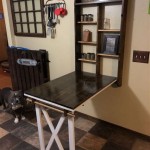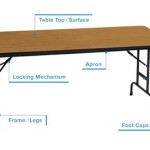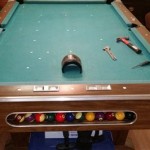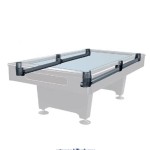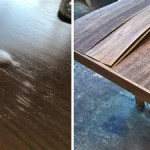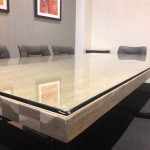What Are The Measurements Of A Regulation Size Pool Table In Inches?
Understanding the precise measurements of a regulation-size pool table is crucial for both casual players and competitive billiard enthusiasts. These dimensions, standardized by governing bodies like the World Pool-Billiard Association (WPA) and the Billiard Congress of America (BCA), ensure fair play, consistent gameplay, and a level playing field for tournaments worldwide. This article details the specific dimensions of a regulation-size pool table, focusing on measurements in inches, and explains the rationale behind these standards.
Pool tables come in various sizes, typically ranging from 6 feet to 9 feet in length. However, only the 9-foot table is considered regulation size for professional and sanctioned play. While smaller tables are suitable for recreational use and smaller spaces, they do not adhere to the strict specifications required for competitive billiards. The standardized measurements encompass the overall table dimensions, the playing surface area, the height of the table, and the size of the pockets. All of these contribute to the overall playing experience and strategic considerations.
The consistency in these measurements allows players to develop skills that are transferable across different venues and tournaments. A player accustomed to the nuances of a regulation-size table will find it easier to adapt to different environments, as the angles, distances, and overall gameplay will remain consistent. Deviation from these standardized dimensions can significantly alter the dynamics of the game, impacting shot accuracy, ball behavior, and strategic planning.
Overall Table Dimensions and Playing Surface
The overall dimensions of a regulation 9-foot pool table are approximately 112 inches in length and 62 inches in width. These measurements include the rails (or cushions) that surround the playing surface. It's important to note that these are external dimensions, and the crucial aspect is the playing surface itself. The playing surface, which is the area covered by the cloth and bounded by the cushions, must accurately measure 100 inches in length and 50 inches in width. This translates to a 2:1 ratio, where the length is exactly twice the width. This precise ratio is essential for maintaining the integrity of the game and ensuring that the angles and trajectories of the balls are predictable and consistent.
The playing surface is typically made of slate, which provides a perfectly flat and rigid base. The slate is covered with billiard cloth, usually made of wool or a wool-nylon blend. The thickness of the slate can vary, but it is generally at least 1 inch thick for a 9-foot table to ensure stability and prevent warping. Thicker slate is preferred, as it offers greater resistance to movement and maintains the flatness of the playing surface over time. Warping or unevenness in the slate can drastically affect the roll of the balls and compromise the accuracy of shots.
The accuracy of the 100-inch by 50-inch playing surface is paramount. Even minor deviations can impact the game, especially at a professional level. Manufacturers of high-quality pool tables adhere to stringent tolerances to ensure that the playing surface meets the required specifications. Regular maintenance, including cleaning the cloth and checking for any imperfections in the slate, is essential for preserving the integrity of the playing surface and maintaining the consistency of gameplay.
Table Height and Rail Specifications
The height of a regulation-size pool table, measured from the floor to the top of the playing surface (excluding the cushions), should fall within a specific range. According to the BCA, the height should be between 29.25 inches and 31 inches. This height range is designed to accommodate players of various statures and ensure comfortable gameplay. A table that is too low or too high can strain the player's back and affect their ability to maintain a stable stance and execute accurate shots.
The rails, or cushions, which surround the playing surface, are another critical element of the pool table's dimensions. These are made of rubber and are designed to provide a consistent and predictable bounce for the balls. The height of the rail nose, which is the point where the rail meets the playing surface, is crucial for ball trajectory. The rail nose height typically ranges from 62.5% to 64.5% of the ball diameter. This specification ensures that the balls rebound off the cushions at the correct angle and with the appropriate speed.
The shape and composition of the rails also play a vital role in the game. Different types of rubber compounds are used to create rails with varying degrees of responsiveness. Some rails are designed to provide a faster rebound, while others offer more control and spin. The BCA and WPA have specific guidelines for the type of rubber that can be used in sanctioned tournaments, ensuring that all players are competing on tables with similar playing characteristics.
Pocket Dimensions and Placement
The dimensions and placement of the pockets on a regulation-size pool table are perhaps one of the most crucial elements that define gameplay. The pockets are located at the four corners and in the middle of the long sides of the table. The size and shape of these pockets are carefully regulated to provide a challenging yet fair experience. The corner pockets are designed to be slightly smaller than the side pockets, adding another layer of complexity to the game.
According to the BCA, the corner pocket openings should measure between 4.5 inches and 4.625 inches at the cloth line (the visible edge of the cloth). The side pocket openings should measure between 5 inches and 5.125 inches at the cloth line. These measurements represent the distance between the points of the facings, which are the pieces of material that line the inside of the pocket. The angle of the facings also plays a significant role in how the balls enter the pockets. The facings should be angled inwards to guide the balls into the pocket and prevent them from bouncing out.
The pocket depth, which is the distance from the cloth line to the back of the pocket, is also a critical factor. B shallow pocket can cause the balls to bounce out, while a deep pocket can make it difficult to retrieve the balls. The BCA does not specify a precise measurement for the pocket depth, but it should be sufficient to accommodate several balls without impeding gameplay. The precise placement of the pockets is also stipulated, measured from the center of each pocket to the nearest rail. Minor deviations from these pocket specifications can significantly alter the difficulty of the game, making the pockets either too forgiving or too challenging.
In conclusion, understanding the measurements of a regulation-size pool table in inches is essential for any player who wishes to compete at a professional level or simply enjoy a consistent and fair game. The specific dimensions of the playing surface, table height, rail specifications, and pocket dimensions all contribute to the overall playing experience and strategic considerations. By adhering to these standardized measurements, players can develop their skills, compete on a level playing field, and appreciate the nuances of the game of billiards.

The Official Size Of A Pool Table Canadian Home Leisure

How Tall Is A Standard Pool Table Height Guide Bar 101

Complete Guide To Pool Table Size And Room Dimensions Sawyer Twain
What Size Pool Table Fits My Room Beta Billiards

Gse Sports Expert Style 2 25 Inch Regulation Size Billiard Pool

What Size Room Will I Need For My Snooker Table Liberty

How Much Room Do You Need For A Pool Table Dimensions

Pool Table Sizes

7 5 Ft Pool Table Billiard Cue Rack Dartboard Set Tan By Barrington Billiards Company Com

Snooker Table Layout Dynamic Billiard Mississauga

